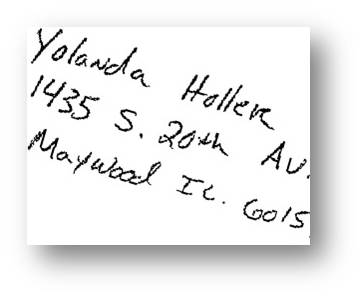A decade of intensive investment in Optical Character Recognition (OCR) systems have resulted in unparalleled success in the speeding up of mail sorting, the increase of OCR reading quality, and the reduction of manual data entry costs. This progress has made recognition technology the most important factor influencing the efficiency of mail sorting equipment. The cost of processing the mail dropped from an estimated $55 per 1,000 letters manually to less than $5 per 1,000 letters with automated sorting. Another significant achievement of the last decade is that technology has enabled the automation of formats that were difficult or impossible to automate 10 years ago, so that magazines, parcels and even larger items can be automatically sorted by machine. However, modern world market trends require the postal industry to adapt to increased competition, changing customer behaviors and uncertain or lower mail volumes. This situation raises the bar in performance and efficiency standards at all stages of mail processing; from mail sorting to the quality and variety of services provided.
Currently when recognition technology reads more than 90% of letter mail and with the overall potential of address recognition rates being less than 100%, recognition technology has come close to the point where further improvement depends on reading more than just address data. Mailpieces contain other kinds of information, which, if automatically processed, can further improve the efficiency of Postal services.
 For example the automatic reading of an addressee name is the next important step to improving the quality of mail sorting technology. This capability increases the finest depth of sort: the ability to extract a maximum of information from an address on a mailpiece. It also helps correct errors that may occur at the stage of address reading, and thereby improve the accuracy of postal sorting and the deliverability of mail.
For example the automatic reading of an addressee name is the next important step to improving the quality of mail sorting technology. This capability increases the finest depth of sort: the ability to extract a maximum of information from an address on a mailpiece. It also helps correct errors that may occur at the stage of address reading, and thereby improve the accuracy of postal sorting and the deliverability of mail.
The current state of OCR technology grounded in the intelligent and intensive use of context allows for the accurate reading of addressee names both in handwritten and machine printed addresses. Therefore, a comprehensive and accurate database of names is one of the key components that influence the future success of automatic reading technology.
The capability to read addressee names not only helps to improve the final depth of sort, but also allows companies to provide better and expanded services to customers. In particular, OCR technology is used in the provision of mail redirection service to customers.
Redirection is a cost-effective and convenient way for a customer to continue to receive mail when the home or business is relocated, even if the move is temporary, or to receive mail at an overseas address. About 17 percent of the US population moves each year, resulting in approximately 43 million change-of-address cards and over 5 billion pieces of mail that must be forwarded, returned to sender, or alternatively handled with an annual cost of more than $ 1 billion.
Today the USPS relies on an automated OCR-based system for mail redirection, which helps the postal service make the process of mail redirection more timely, accurate and cost-effective.
Automated mail forwarding solutions have been installed and are in use at USPS processing plants, reducing operating costs and providing significant savings to the Postal Service. However, fast and constant advances in OCR technology offer great potential for further improving the efficiency of this application.
There are many other areas in mail operations where effectiveness may be significantly improved using technological innovations. Technical innovations may also offer new opportunities for business. Technological innovations available on the market deserve a closer look, because they will continue to be an integral prerequisite for keeping up with the rapidly changing infrastructure of the modern economy.
Learn more in the white paper Turning Envelope Data into Actionable Information:

